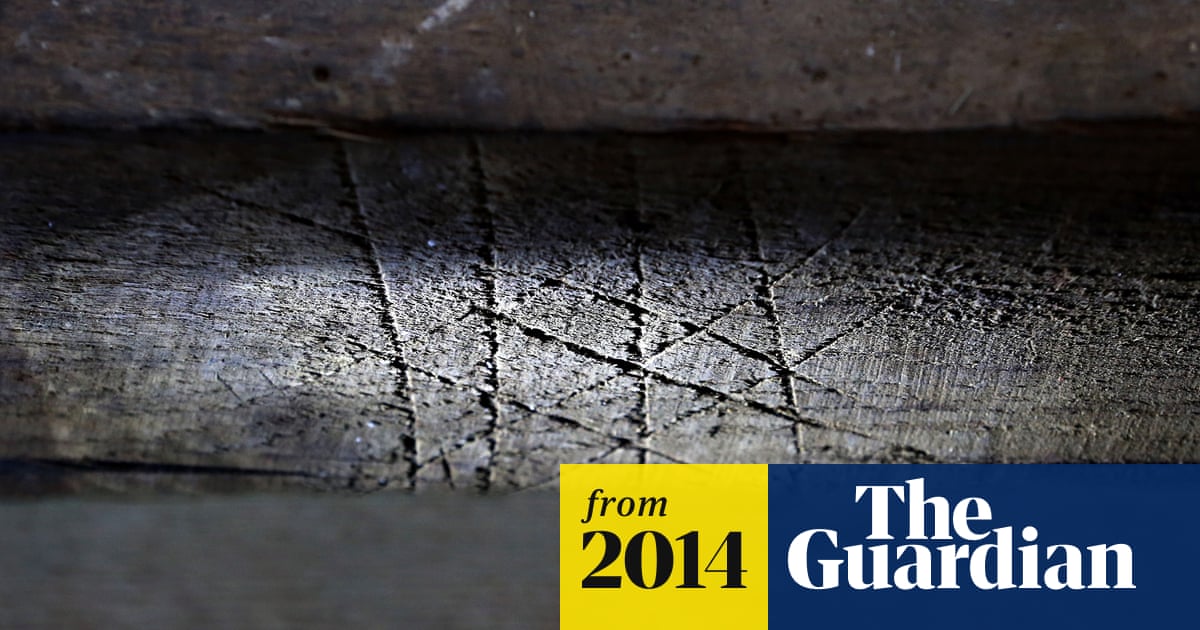I doubt if anyone but me is in a position to attend, but I thought I'd mention it anyway. The Weald and Downland Living Museum near Chichester runs a lot of courses to do with traditional crafts and trades and the like, but a day course coming up next March has caught my eye -- the Magical Protection of Buildings. It's run by a chap called Timothy Easton, who has contributed to a book Physical Evidence for Ritual Acts, Sorcery and Witchcraft in Christian Britain: A feeling for Magic
He's also written an article for the W&D members magazine where he talks of "spiritual middens" which I'd not heard of before. They're forms of ritual concealment where the protecting objects aren't eg buried by the door or eg walled into a space (shoes and cats seem to be popular) but are instead dropped into cavities which have arisen because of homes being remodelled with new walls around chimneys and the like. Because these cavities remain open and accessible from places like attics, they potentially represent continuing attempts at magic protection spread over some time, perhaps even generations. Here's the beginning of a chapter he's written for the book on this Spiritual Middens
In the magazine article he cites as an example accumulated deposits behind a first floor C17th internal lath and plaster wall above the ceiling of a hall fireplace. One side contained 1 spurshield, 15 shoes, 3 clogs, almanacs, 2 kittens, a rat, a bird's wing and vertebrae, a pipe bowl, clothing, a goose wing and pig's trotters; the other side had 5 shoes and clothing fragments. The sceptic in me can't help wondering whether some of that comes from children throwing stuff in just on whim, but not all of it can be mischief. He talks of up to 200 individual items being found at some sites, and one house had 80 shoes -- to my untutored eye some of them look Georgian/Victorian, which raises the question whether that desperate need to protect against witches was still current in the C18th/C19th or if this ritual deposit has become something they did because their forebears had done it, without asking why. (If I go on the course, I might find out!)
I've no idea whether ritual concealment was widespread throughout Europe -- perhaps sknox can tell us! -- but I know something of the kind happened in the USA, as when I was googling terms I found this blog post Unearthing White Magic: Witch Bottles in the Archeological Record
Anyhow, for those of us writing fantasy set in kind-of medieval times, or perhaps even later, this idea of ritual concealment to give protection against witches -- real or otherwise -- might be something to use to give greater depth to the world and the inhabitants' fears.
Physical Evidence for Ritual Acts, Sorcery and Witchcraft in Christian Britain - A Feeling for Magic | Ronald Hutton | Palgrave Macmillan
This volume investigates the physical evidence for magic in medieval and modern Britain, including ritual mark, concealed objects, amulets, and magical equipment. The contributors are the current experts in each area of the subject, and show between them how ample the evidence is and how...
www.palgrave.com
He's also written an article for the W&D members magazine where he talks of "spiritual middens" which I'd not heard of before. They're forms of ritual concealment where the protecting objects aren't eg buried by the door or eg walled into a space (shoes and cats seem to be popular) but are instead dropped into cavities which have arisen because of homes being remodelled with new walls around chimneys and the like. Because these cavities remain open and accessible from places like attics, they potentially represent continuing attempts at magic protection spread over some time, perhaps even generations. Here's the beginning of a chapter he's written for the book on this Spiritual Middens
In the magazine article he cites as an example accumulated deposits behind a first floor C17th internal lath and plaster wall above the ceiling of a hall fireplace. One side contained 1 spurshield, 15 shoes, 3 clogs, almanacs, 2 kittens, a rat, a bird's wing and vertebrae, a pipe bowl, clothing, a goose wing and pig's trotters; the other side had 5 shoes and clothing fragments. The sceptic in me can't help wondering whether some of that comes from children throwing stuff in just on whim, but not all of it can be mischief. He talks of up to 200 individual items being found at some sites, and one house had 80 shoes -- to my untutored eye some of them look Georgian/Victorian, which raises the question whether that desperate need to protect against witches was still current in the C18th/C19th or if this ritual deposit has become something they did because their forebears had done it, without asking why. (If I go on the course, I might find out!)
I've no idea whether ritual concealment was widespread throughout Europe -- perhaps sknox can tell us! -- but I know something of the kind happened in the USA, as when I was googling terms I found this blog post Unearthing White Magic: Witch Bottles in the Archeological Record
Anyhow, for those of us writing fantasy set in kind-of medieval times, or perhaps even later, this idea of ritual concealment to give protection against witches -- real or otherwise -- might be something to use to give greater depth to the world and the inhabitants' fears.


